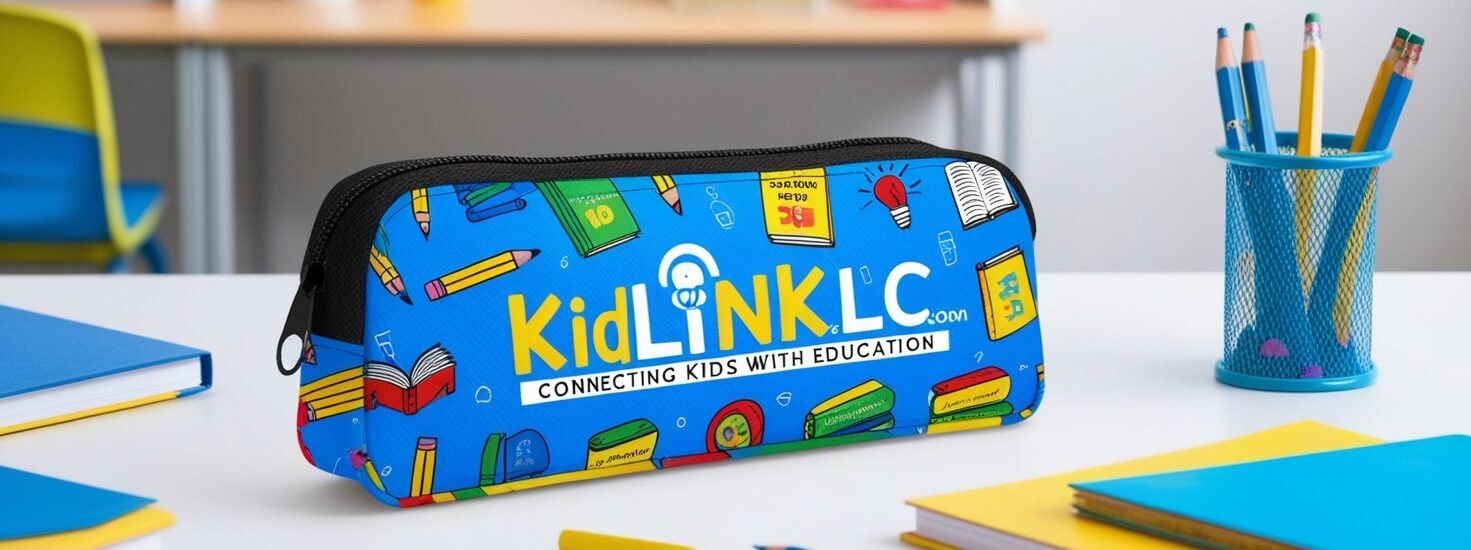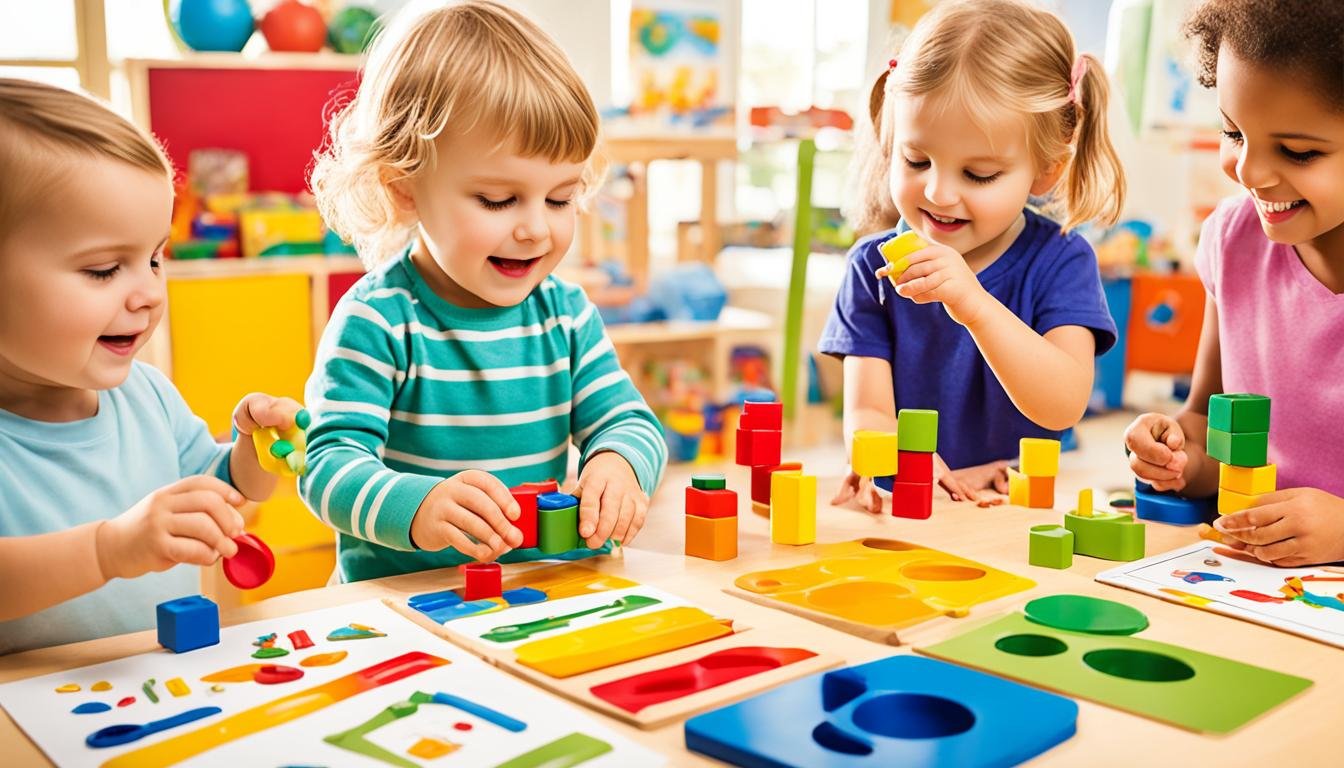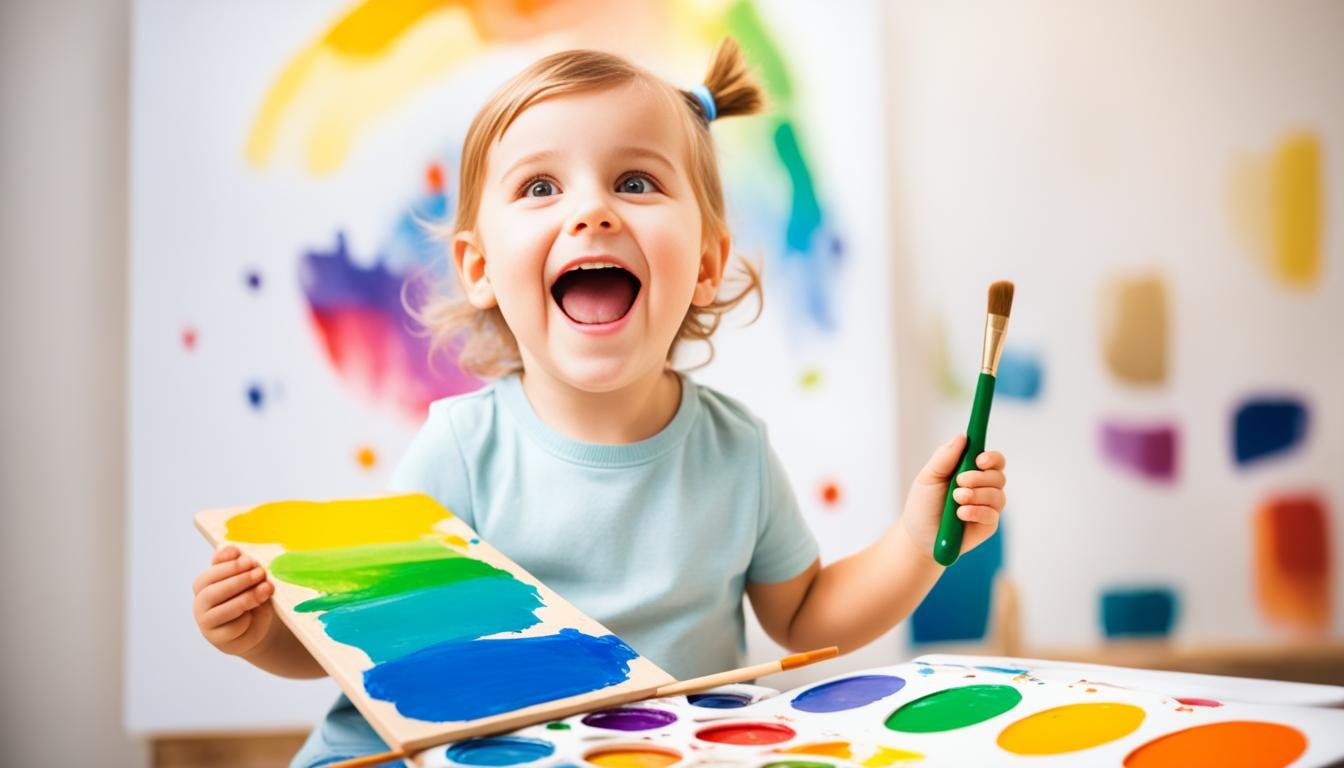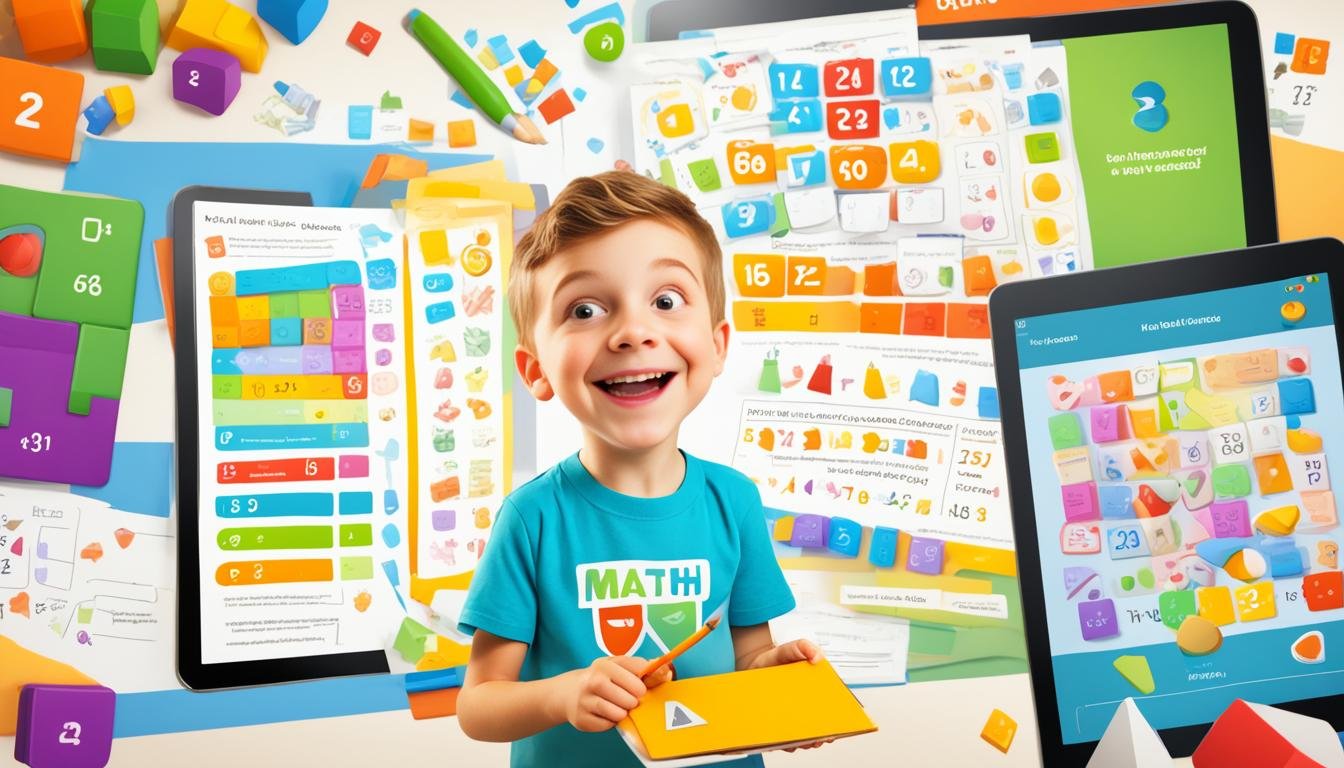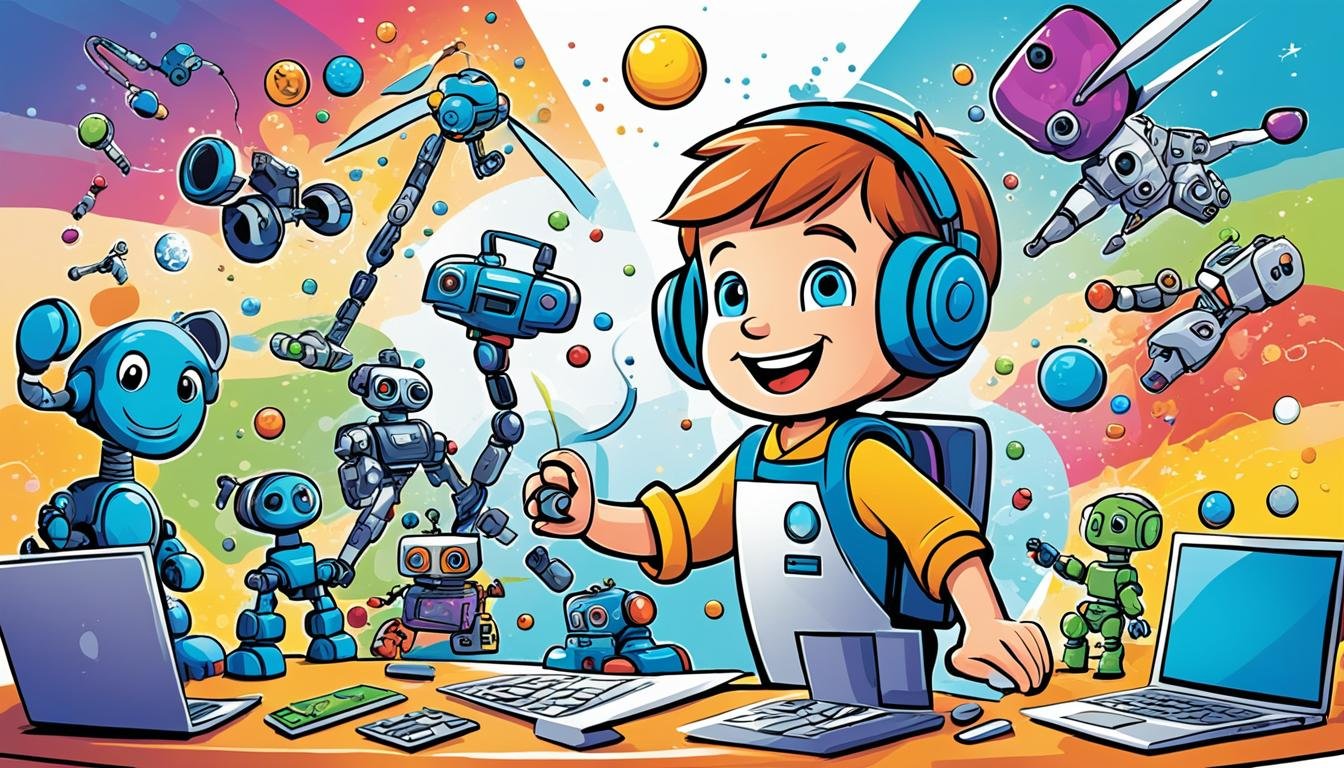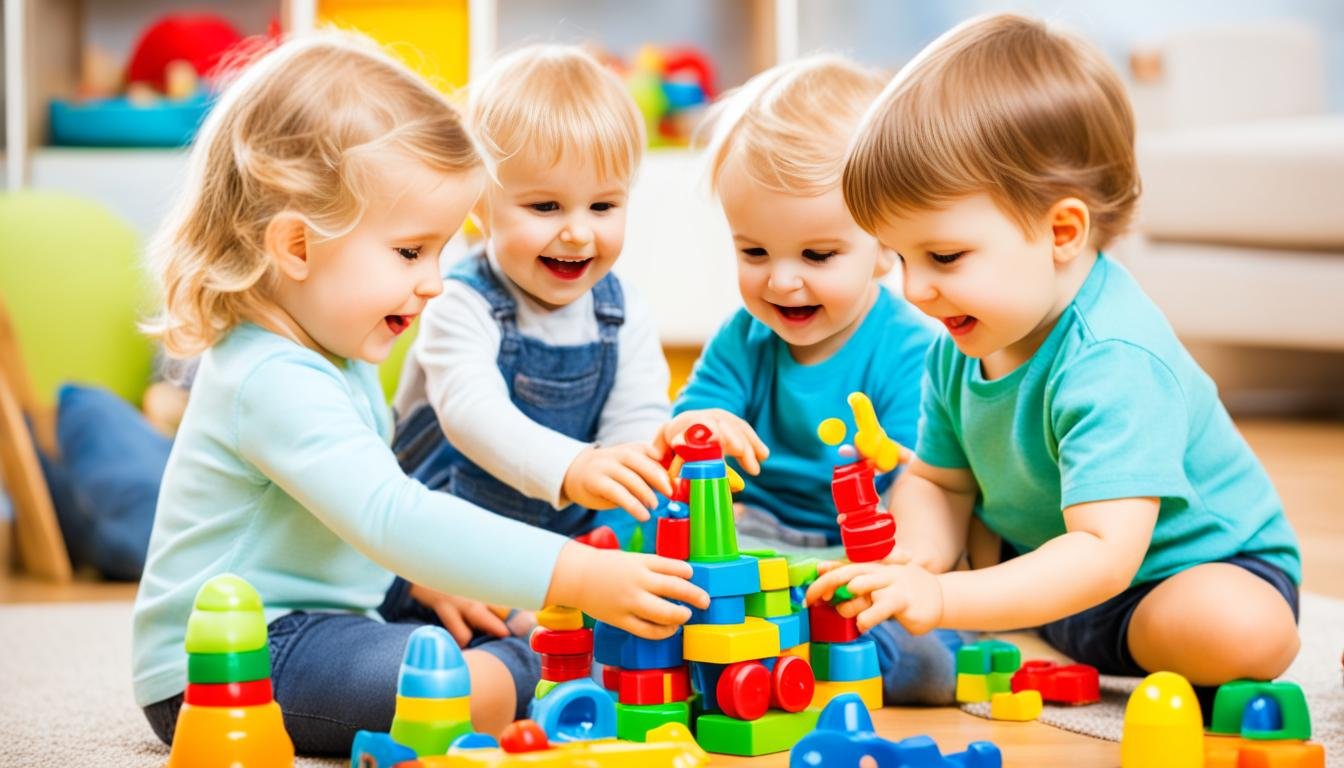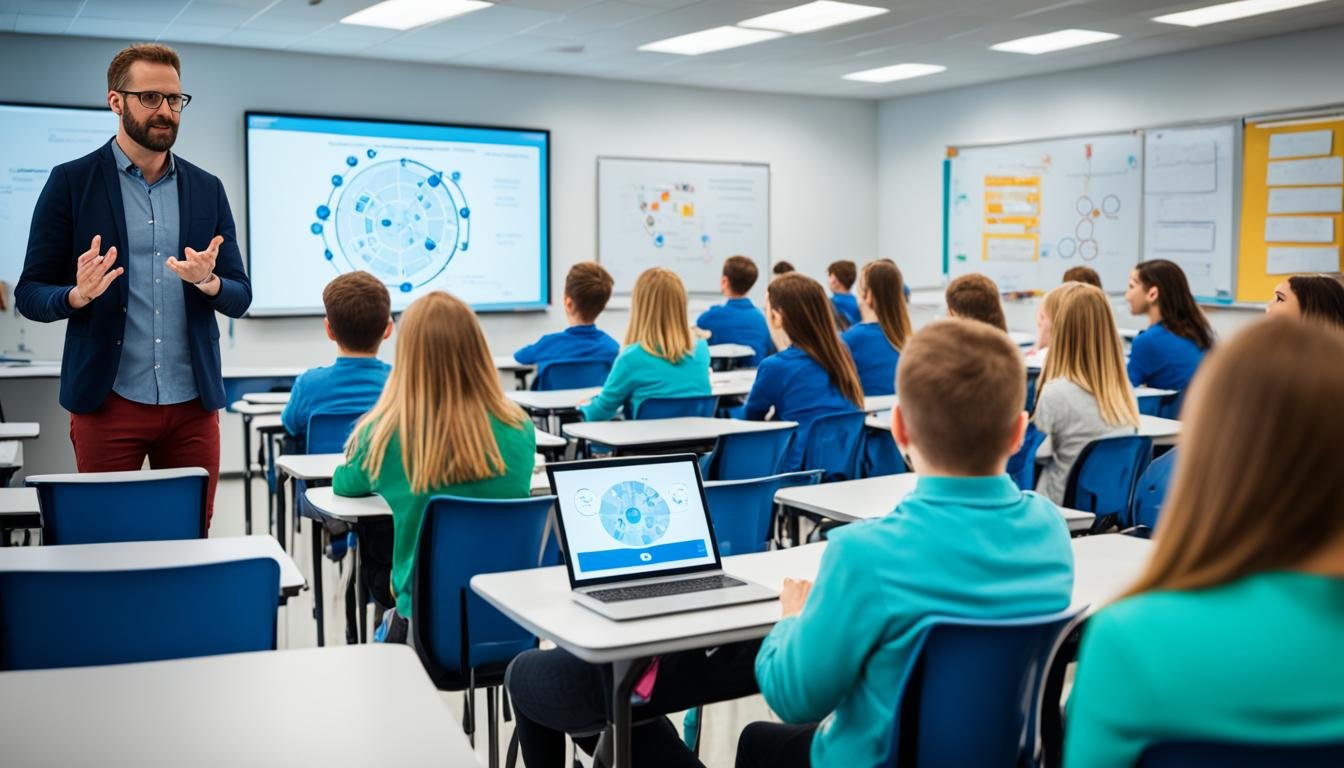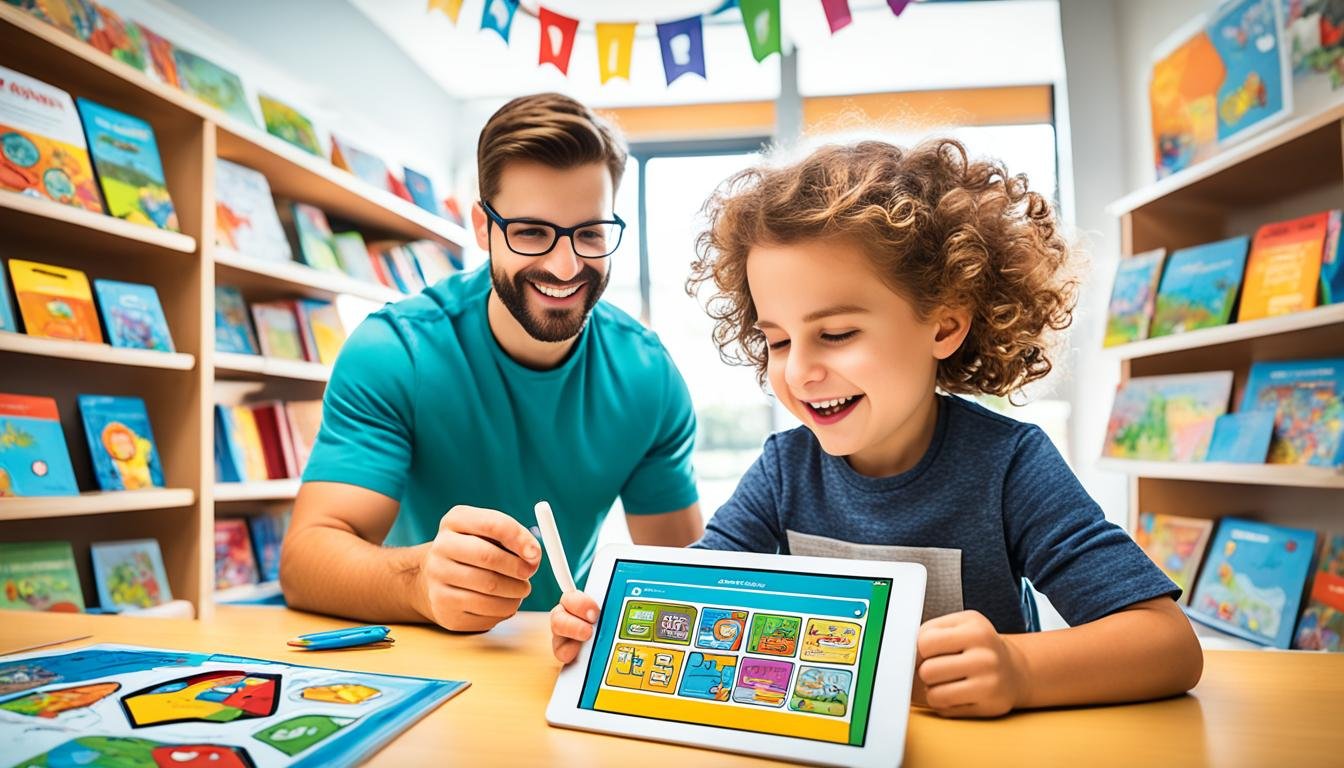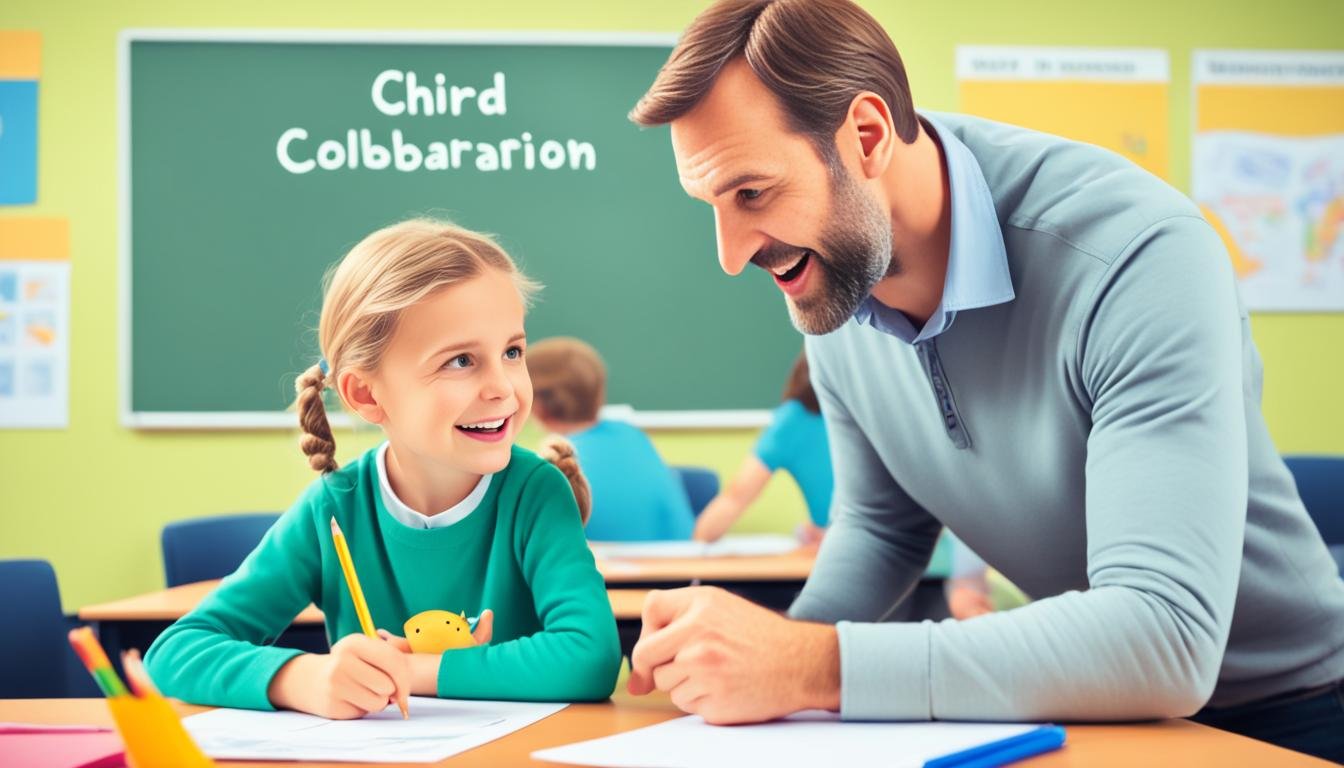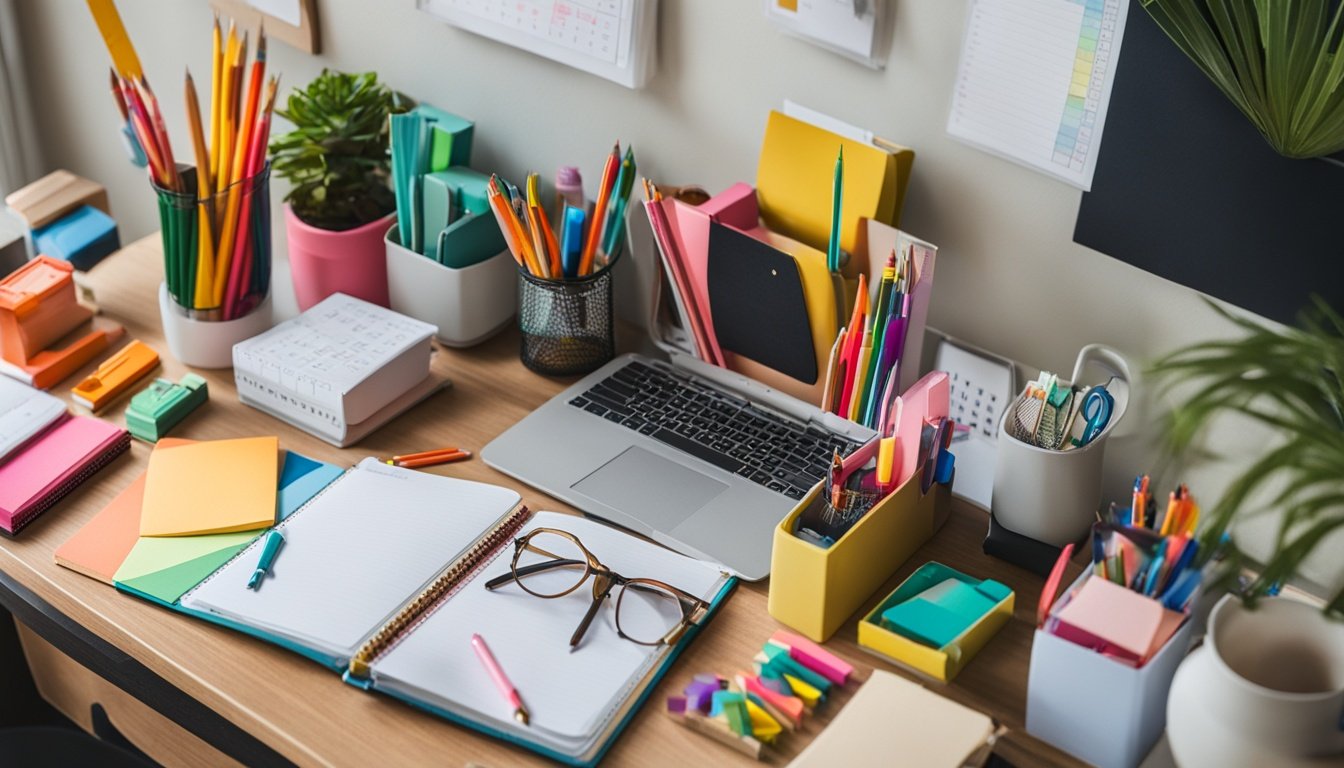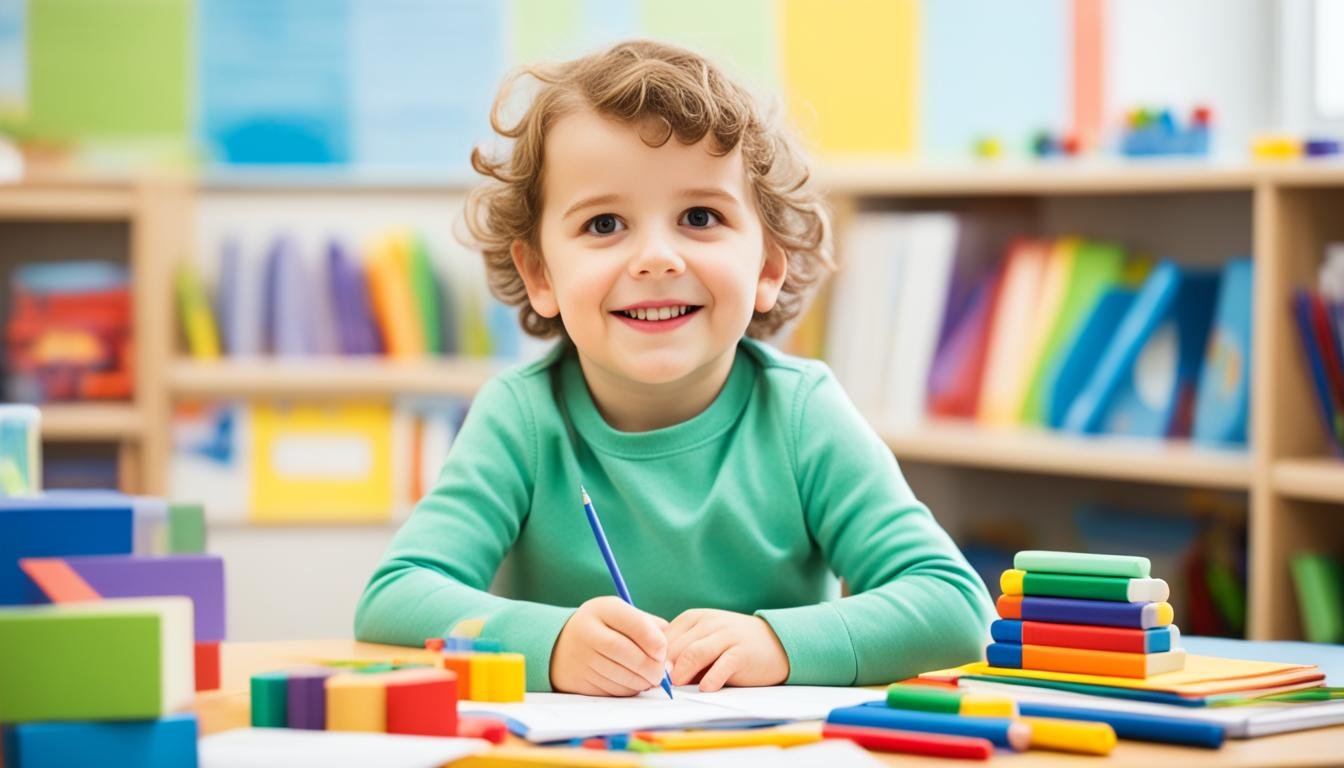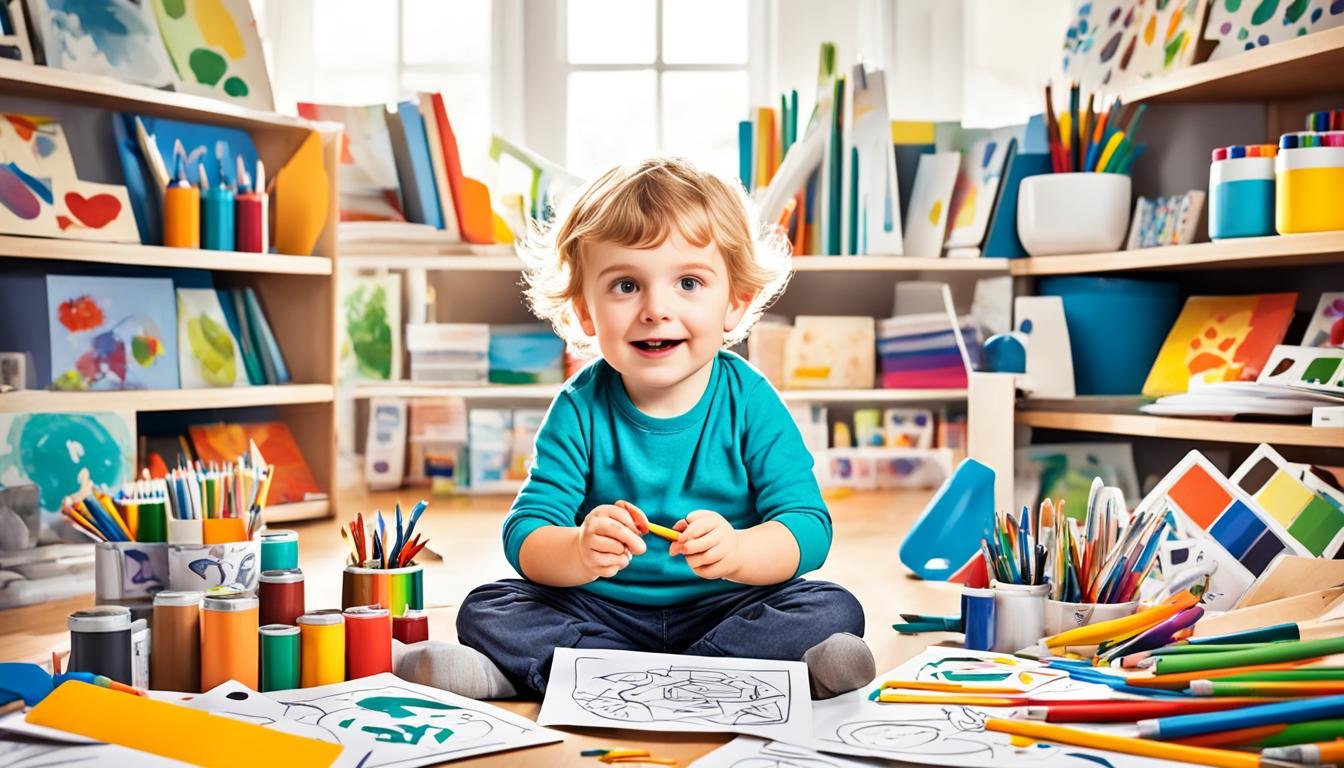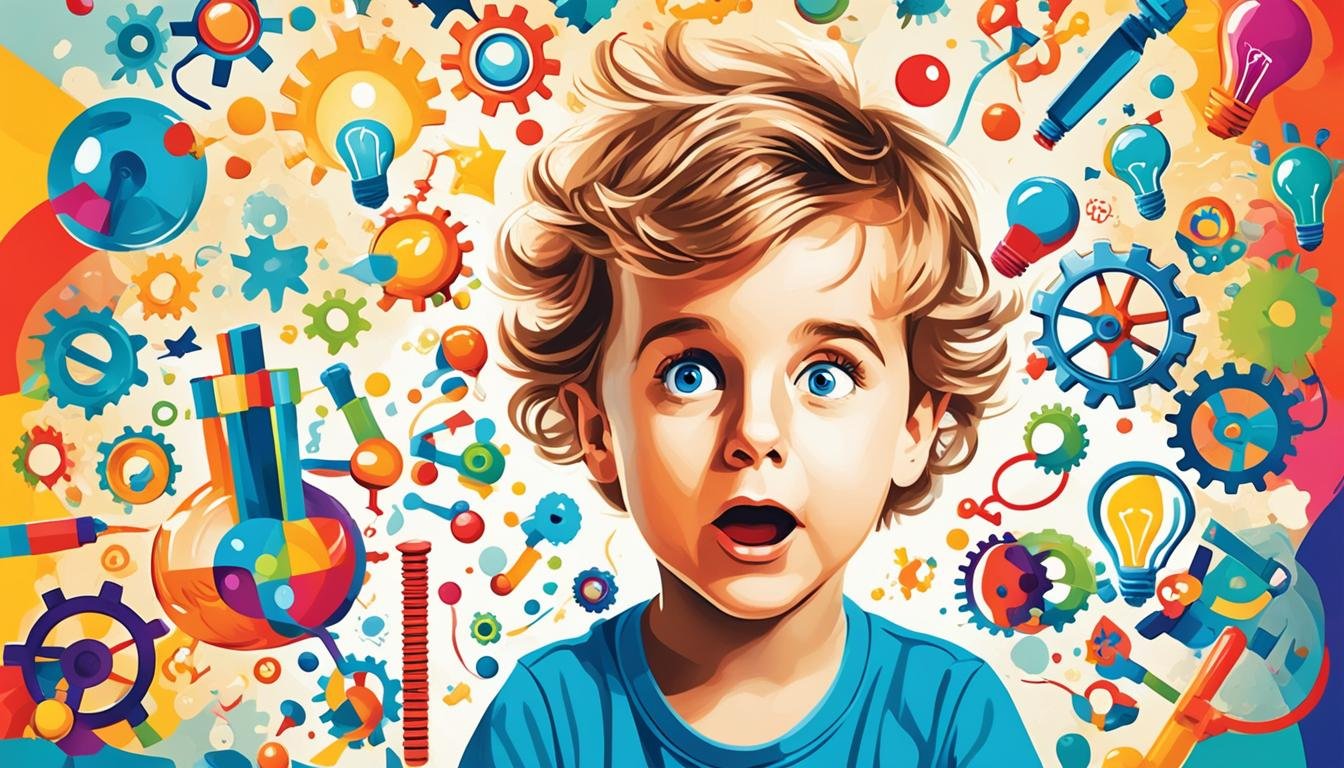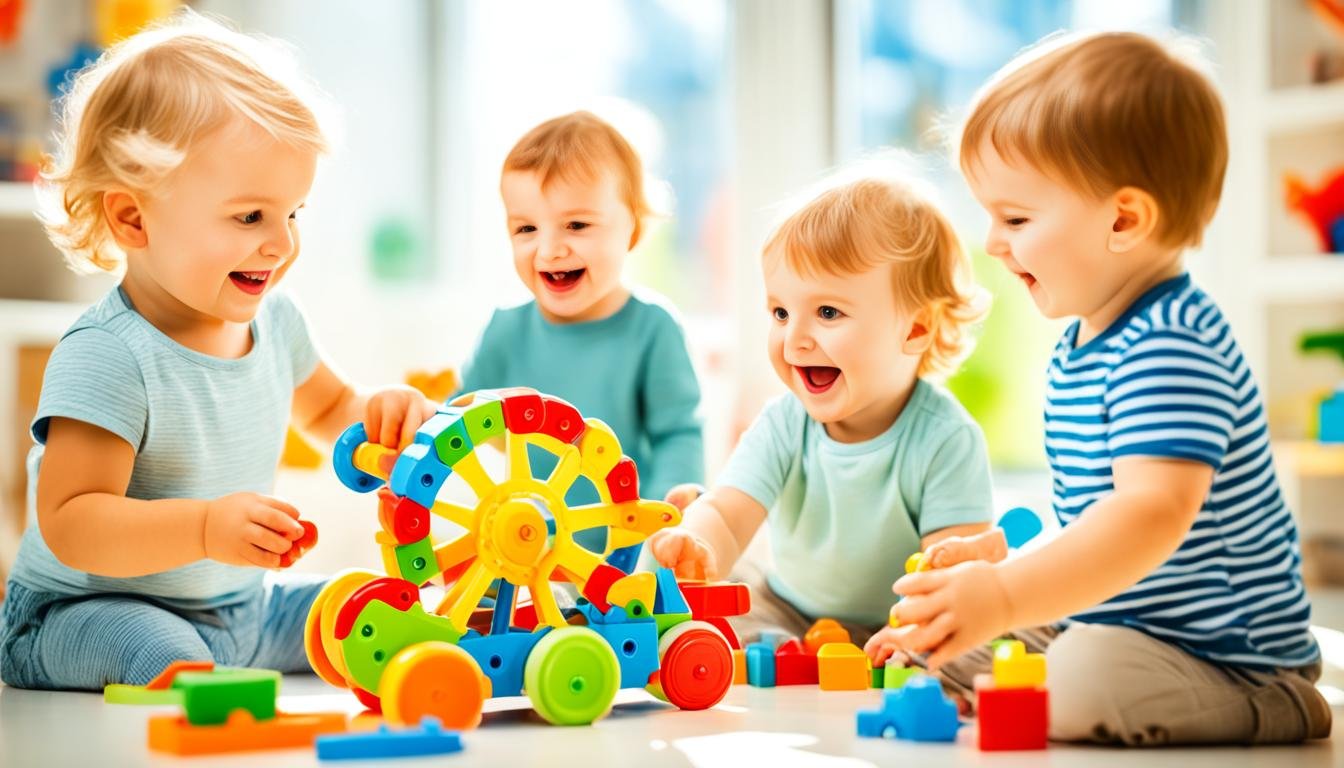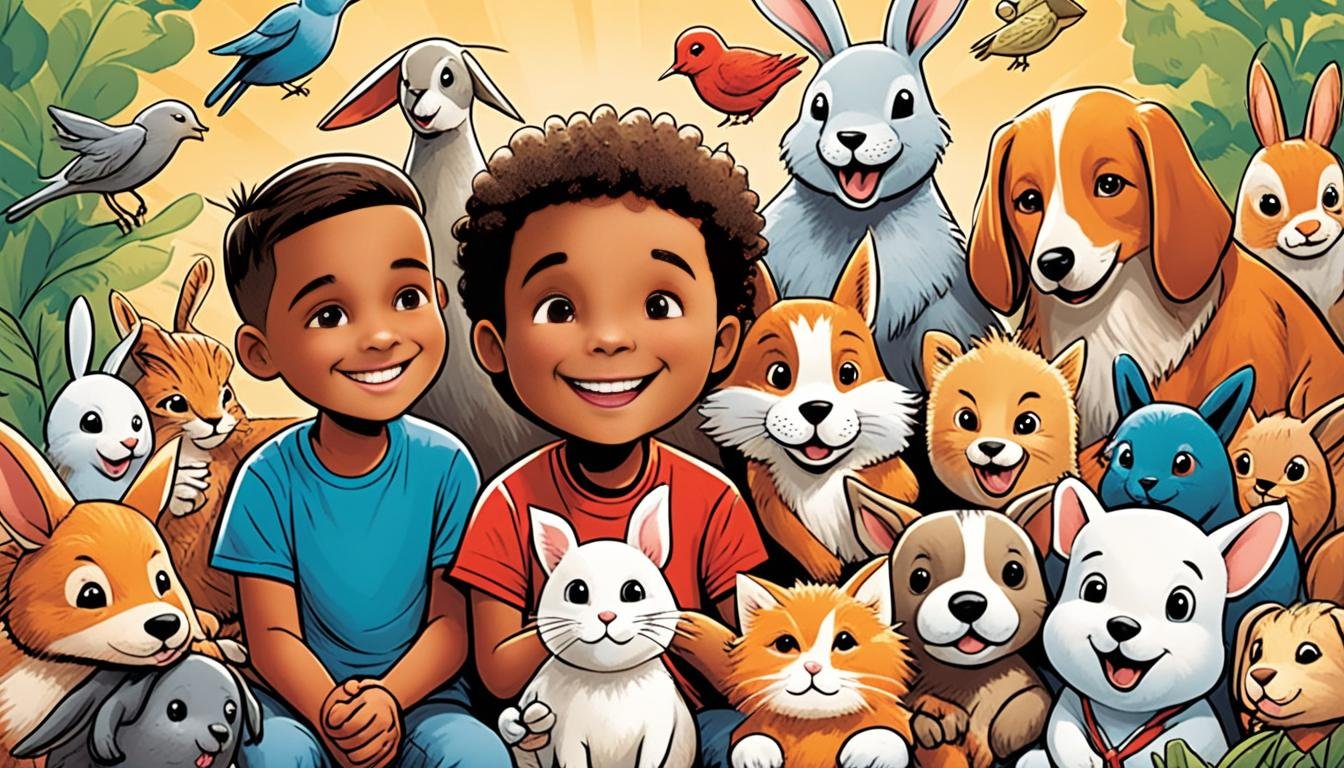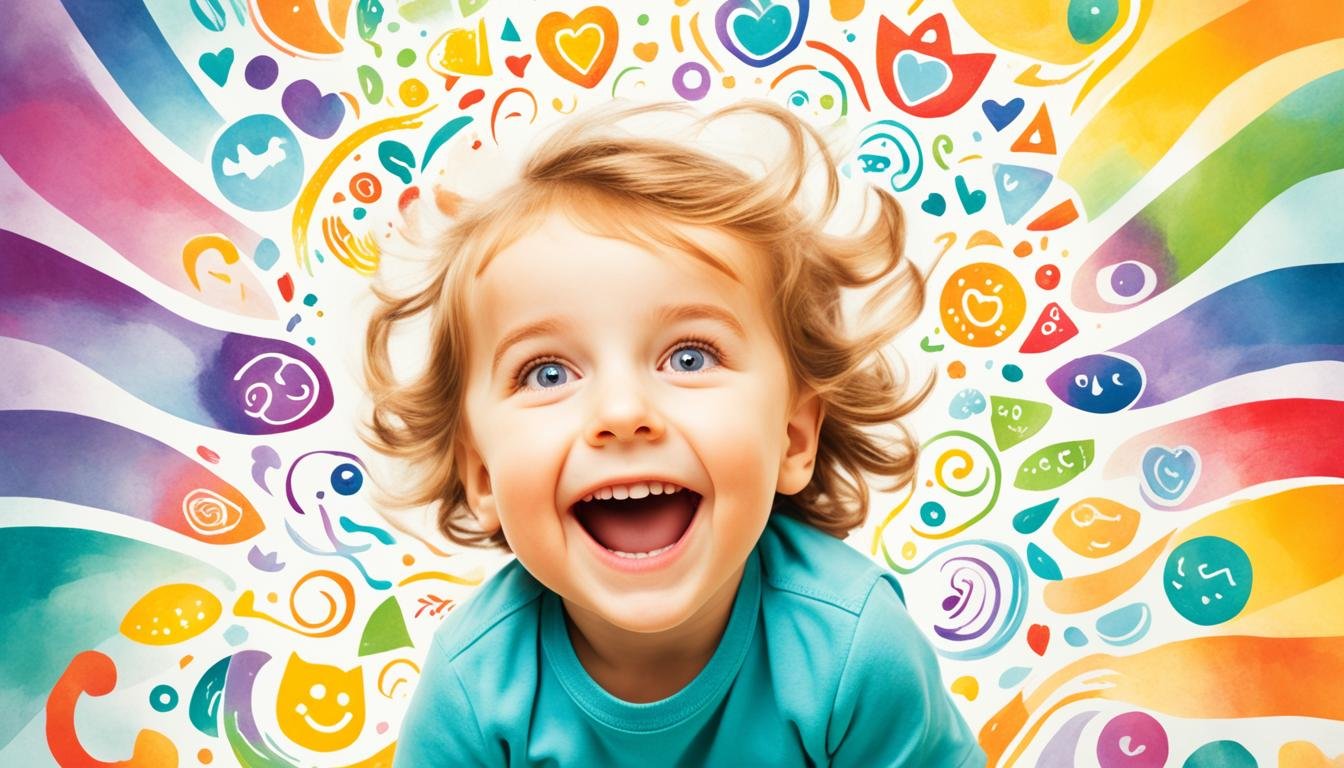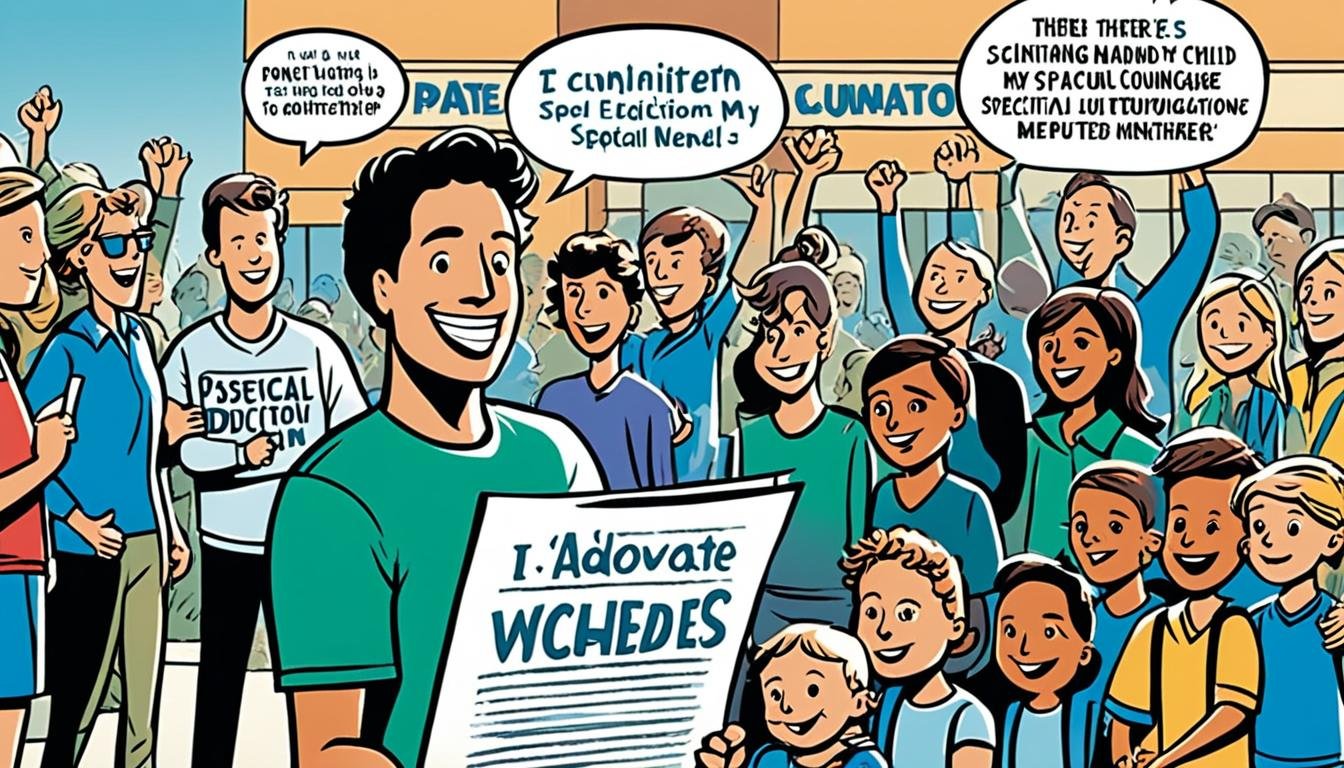What Are the Most Effective Early Childhood Education Methods and Why Are They Important?
Ever thought about how early childhood education shapes your child’s future? It’s key to know the best preschool curriculum to help your child grow. These methods lay the foundation for future success and help in social and emotional growth. Studies show that the right education leads to better grades and more graduates. This article will look into different teaching methods to help you pick the best for your child.
Key Takeaways
- Understanding various early childhood education methods is crucial for children’s development.
- Effective preschool curriculum contributes to long-term academic success.
- Research shows a strong link between quality education and social-emotional skills.
- Choosing the right educational approach can boost learning outcomes for young children.
- Best practices in early childhood education can create a positive learning environment.
Understanding the Importance of Early Childhood Education
Early childhood education (ECE) is key to your child’s growth. It lays the groundwork for learning throughout their life. Preschool education is crucial because it gives young kids a chance to learn and make friends.
It boosts their thinking skills and social skills too. These are important for doing well in school later on.
Kids learn important things in early childhood, like speaking, solving problems, and working with others. Good teaching methods for young kids make sure they get what they need. This early time shapes how they see learning, making them curious and eager for knowledge.
- Fosters a love for learning
- Enhances social skills through interaction
- Promotes cognitive growth in a supportive environment
Putting your child in early childhood education gives them tools that help now and later.
Key Characteristics of Effective Early Childhood Education
Effective early childhood education focuses on key traits that help young learners. A main feature is the child-centered approach. This means teachers focus on what each child needs, likes, and can do. This approach is key for keeping kids engaged and making learning fun.
Using play to teach is another key part. It lets kids explore, dream, and think deeply. This way, they learn important skills while having fun. It helps them reach important milestones in early learning.
A caring environment is crucial for good education. Teachers play a big role here. When kids feel safe and trusted, they learn more and take risks. This helps them grow in many areas, like creativity and social skills.
Checking on how kids are doing is important too. Teachers watch how kids are growing and change. This helps them teach in the best way possible. It makes sure kids get the help they need for future learning.

| Characteristics | Description |
|---|---|
| Child-Centered | Focus on individual needs, interests, and capabilities. |
| Play-Based Learning | Encourages exploration and imagination through play. |
| Positive Teacher-Child Interactions | Builds trust and emotional support in the learning environment. |
| Developmental Assessments | Tracks growth and tailors instruction accordingly. |
Early Childhood Education Methods
In early childhood education, there are many ways to teach kids. Each method has its own ideas and ways of teaching that shape how kids learn. Choosing the right way to teach can really help kids pick up new things and connect with the world. Let’s look at some top teaching methods and what makes them good choices.
Overview of Various Educational Models
Models like Montessori, Waldorf, and Reggio Emilia offer new ways to teach kids. They focus on what each child needs. Here are the main points of each model:
- Montessori lets kids learn on their own with hands-on activities. They can explore at their own speed.
- Waldorf values creativity and imagination. It helps kids grow emotionally and artistically.
- Reggio Emilia is all about working together and talking. Kids share their thoughts and feelings through different arts.
Criteria for Selecting Effective Methods
When picking early childhood teaching strategies, think about these key points:
| Criteria | Description |
|---|---|
| Adaptability | The model should fit different learning styles and needs. |
| Teacher Involvement | Teachers should help and guide kids in their learning. |
| Child-Led Discovery | Kids should be encouraged to take charge of their learning by exploring and asking questions. |
Knowing what each educational model aims for helps you pick the best one for the kids you care for. Using the right methods can really boost their early learning.
Play-Based Learning Approach
The play-based learning approach is key in early childhood education. It lets kids learn through hands-on activities. This way, they get to explore and be creative, making learning fun and meaningful.
Benefits of Play-Based Learning
Using a play-based curriculum has many benefits for kids. These include:
- Enhanced cognitive skills: Play helps kids solve problems and think critically.
- Social interactions: Kids learn to work together, share, and understand social cues.
- Emotional intelligence: Play helps kids express feelings and control their emotions.
- Language development: Playing with others boosts vocabulary and communication skills.
These benefits lay a solid base for lifelong learning and being adaptable.
How to Implement Play-Based Techniques in the Classroom
To use play-based learning, teachers need to plan carefully. Here are some tips:
- Make the classroom welcoming with materials that spark imagination and discovery.
- Let kids take the lead in their play to encourage learning by choice.
- Blend structured play with developmental goals to keep learning fun and focused.
- Switch between free play and guided activities to balance freedom with learning.
By following these tips, teachers can make their classrooms engaging and supportive for young learners. For more tips on teaching, check out this useful resource.
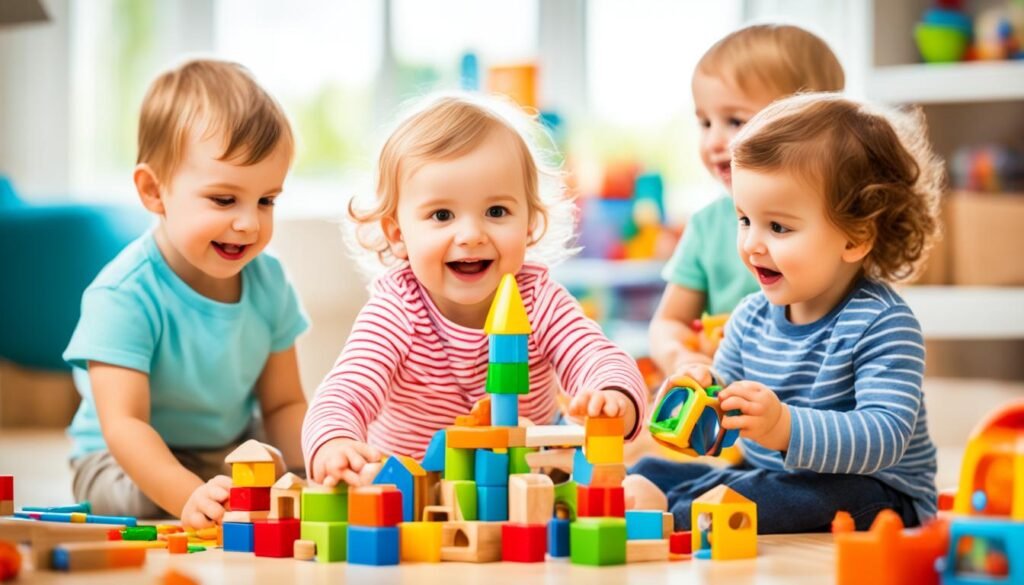
When setting up your learning spaces, think about using a play-based curriculum. It makes learning fun and builds important skills for kids. Policies supporting these methods can also help make learning available to more kids. Learn more about these policies at this link.
Montessori Method: A Child-Centered Approach
The Montessori method is a special way of teaching young kids. It helps them learn on their own and become independent. Kids get to explore and learn at their own speed. This method creates a place where kids can grow and discover things naturally.
Core Principles of Montessori Education
Montessori education has key principles that shape its teaching. These include:
- Child-led Learning: Kids pick what they want to do, based on what interests them.
- Mixed-age Classrooms: Kids of different ages work together, helping everyone learn social skills.
- Hands-on Learning Materials: Special tools make learning fun and help kids understand things better.
- Focus on Independence: Teachers help kids become self-sufficient and think critically.
Pros and Cons of Using Montessori in Early Education
Montessori education has many benefits. It teaches kids important life skills and makes them love learning. But, it’s important to remember some downsides too. Some kids might not get enough help in certain areas because of the focus on independence.
To learn more about teaching young kids, check out KidLinkLC.com. There, you’ll find great resources for kids and their teachers.
Waldorf Education: Emphasis on Imagination
Waldorf education is known for its deep and creative way of teaching. It focuses on the full growth of children. This method boosts creativity and emotional smarts, making learning fun and in line with how kids grow.
Key Features of the Waldorf Approach
Waldorf education has key parts that create a caring place for learning. The lessons include:
- Arts and crafts for self-expression.
- Storytelling to boost imagination and language.
- Movement activities for better coordination and social skills.
Teachers use a daily routine that makes kids feel safe as they explore. This way, they learn to think deeply and be creative in a group.
How Waldorf Education Encourages Holistic Development
Waldorf education values the growth of kids in social, emotional, and thinking skills. By doing hands-on projects and being creative, kids learn important life skills. This helps them:
- Build strong social and emotional skills.
- Love learning that goes beyond school.
- Think flexibly and critically.
Kids enjoy moving through their milestones with happiness in this rich environment. This method gets them ready for school and teaches them right from wrong and how to get along with others. Waldorf graduates are seen as top students in college.

Learn more about the Waldorf education philosophy to see its big impact. This full way of teaching young kids can greatly help your child grow.
Reggio Emilia Approach: A Relationship-Focused Model
The Reggio Emilia approach changes how we think about early childhood education. It focuses on the bonds between kids, teachers, and the community. It sees kids as active learners, full of potential and curiosity. Learning about this approach can make your teaching methods more child-centered.
Principles Behind Reggio Emilia Philosophy
The Reggio Emilia approach has key principles that support exploration and teamwork. These include:
- Child-Led Learning: Kids lead the learning, making it project-based.
- Environment as the Third Teacher: The classroom is designed to spark exploration and creativity.
- Documentation: Teachers watch and record kids’ activities to improve learning.
- Collaboration: Kids, families, and teachers work together, building a community.
- Multiple Representations: Kids share their thoughts through art, words, and movement.
These ideas focus on the child, making sure every kid’s voice is heard. Using these methods in early education boosts creativity and critical thinking. This leads to a more rewarding learning experience for kids.
Developmentally Appropriate Practices in Early Childhood Education
It’s key to know about developmentally appropriate practices for teaching preschoolers. These methods match what kids can do at each stage of their growth. They make sure learning fits what kids need and like. Teachers use active ways to talk and interact with kids, helping them grow.
The Role of Age-Appropriate Methods
Age-appropriate methods are crucial for kids to do well in school early on. They make learning fun and easy to understand for different ages. By using these methods, you make school better for kids, sparking their curiosity and love for learning.
How to Tailor Activities for Different Age Groups
It’s important to know what kids at different ages can do. Adjusting your lessons to fit their needs makes them more fun and engaging. Here are some tips to make your lessons work well:
- Find out what each child likes and needs for fun activities.
- Use hands-on activities to make kids curious.
- Choose materials that are right for their age to help them learn better.
- Do group activities that help kids talk and work together.
Using these ideas helps kids love learning and supports their growth. Looking into developmentally appropriate practices can make your teaching even better.
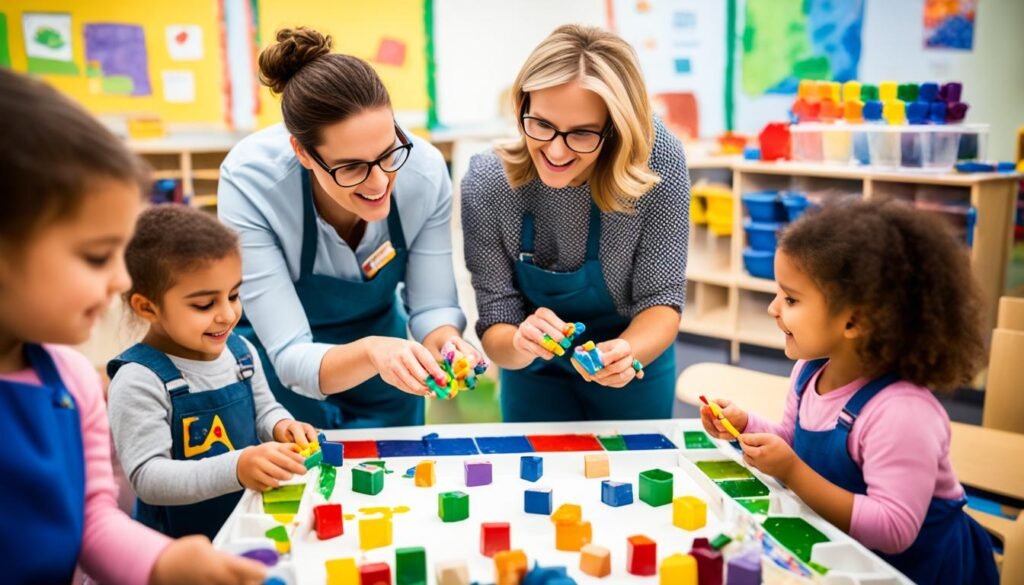
Multi-Sensory Instruction Techniques
Using multiple senses in learning makes it easier for young children to understand. This method helps them connect new information to what they feel, see, and hear. It suits different ways of learning and makes the material more meaningful.
Benefits of Engaging Multiple Senses in Learning
Multi-sensory instruction has many benefits for children’s learning:
- Deeper comprehension: Kids learn better when they use their eyes, ears, and touch.
- Improved memory: Using different senses helps kids remember things better.
- Heightened curiosity: Sensory activities make learning fun and encourage kids to explore.
Examples of Multi-Sensory Activities for Young Children
Here are some ways to use multi-sensory instruction in your classroom:
| Activity | Description |
|---|---|
| Textured Materials | Use fabrics, sandpaper, and natural objects for kids to explore different textures. |
| Musical Games | Songs and movement help kids learn through sound and improve their memory. |
| Interactive Storytime | Stories come alive with visual aids, props, and sound effects. |
| Cooking Activities | Kids help make simple recipes, using their senses to learn about colors, smells, and tastes. |
These sensory activities make learning fun and engaging. They help build strong thinking skills and support social and emotional growth in young children.
Social-Emotional Learning Strategies
Social-emotional learning strategies are key in early childhood education. They help young kids deal with their feelings and make healthy friendships. These strategies make sure kids have the skills to handle challenges, understand their emotions, and connect with others. Teaching emotional intelligence early helps kids get ready to learn and do well in life.
Importance of Social-Emotional Development
Understanding social-emotional development is crucial for teaching young learners. Kids with strong social-emotional skills do better in school and behave better. They can manage their feelings and make good friends, which helps them succeed in school and later on.
How to Integrate SEL in Early Education
To add social-emotional learning to early education, make a caring place where kids feel welcome and important. Here are ways to create a supportive space:
- Encourage cooperative games that promote teamwork and communication.
- Use storytelling as a tool for exploring emotions and understanding different perspectives.
- Facilitate regular discussions about feelings and interpersonal relationships.
- Model emotional regulation by sharing your own experiences and strategies.
This approach helps grow emotional smarts and boosts academic success. By adding social-emotional learning to the curriculum, you get kids ready for life-long learning and deep connections.
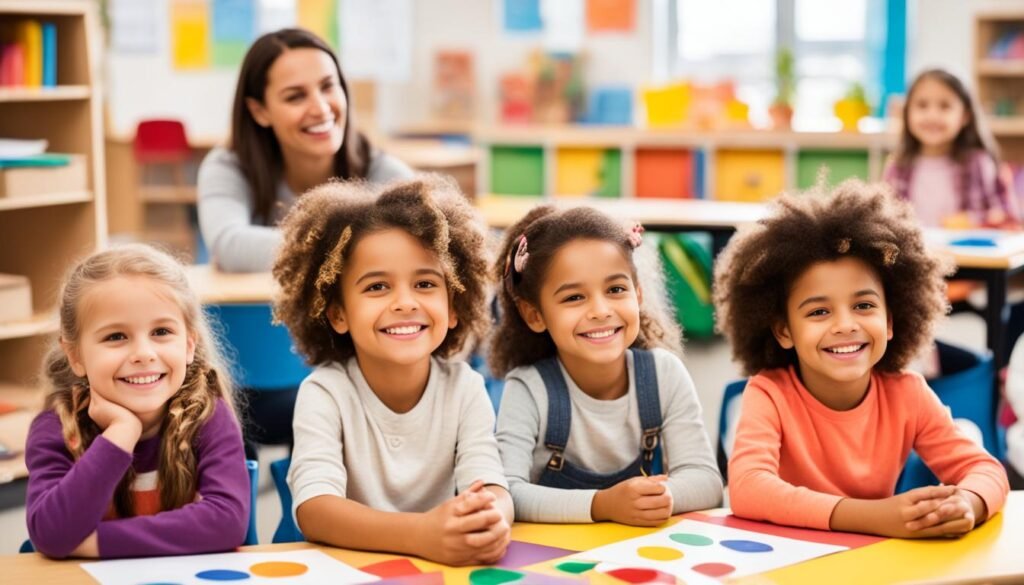
Hands-On Learning Experiences
Hands-on learning is key for young children’s growth. It helps them understand better and develop important skills. Kids do well when they can touch, explore, and make things. This way, they learn to think critically and solve problems, skills they’ll use all their lives.
Why Hands-On Learning is Effective for Young Children
Hands-on learning connects theory with real-life actions. It makes kids curious and eager to learn. When they play developmental games for toddlers, they learn new things and remember them better. This method uses their natural curiosity to help them understand subjects deeply.
Ideas for Hands-On Activities in the Classroom
Here are some fun ways to make learning hands-on:
- Science experiments: Simple experiments, like mixing baking soda and vinegar, teach kids about chemical reactions.
- Gardening projects: Planting seeds and taking care of plants teaches kids about biology and responsibility.
- Interactive art installations: Using clay, paint, and recycled items lets kids be creative and share their thoughts.
- Building stations: Blocks or construction kits encourage teamwork and creativity as kids build their own projects.
- Taste tests: Trying different foods and talking about flavors and textures is a fun way to learn.
These activities make learning hands-on and fun. They help kids love exploring and mastering new skills. These moments will be special for them, laying a strong foundation for learning throughout their lives.

Collaborative Learning in Early Childhood Settings
Teaching young kids to work together is key to their growth. It helps them learn important social and academic skills. They get better at talking, understanding others, and solving problems as a team. These skills are crucial for their future.
Benefits of Encouraging Teamwork Among Young Children
Teamwork in young kids has many benefits:
- Enhanced Communication Skills: Kids learn to share their ideas and listen to others.
- Improved Social Interactions: They make friends and learn to value different views.
- Development of Critical Thinking: Kids take part in discussions that boost their problem-solving abilities.
- Fostering a Sense of Community: Working together helps them feel connected and part of the group.
Strategies for Facilitating Collaborative Learning Opportunities
Here are ways to make teamwork work in the classroom:
- Structured Group Activities: Plan tasks that need teamwork to achieve a goal.
- Cooperative Games: Play games that make kids work together and plan as a team.
- Encouraging Idea Sharing: Make sure kids feel okay sharing their thoughts and ideas.
For more on how teamwork fits into inclusive teaching, check out this resource.

These methods help kids learn the importance of teamwork. Working with others helps them see their role in a group. It prepares them for a lifetime of learning and building strong relationships.
For more on teamwork strategies, see this informative article.
Inclusive Teaching Techniques for Diverse Classrooms
Creating an inclusive atmosphere in early childhood education is key. You want every child, no matter their background or ability, to feel they belong. Inclusive teaching focuses on celebrating each child’s strengths and helping them with their challenges. By changing how you teach, you can make classrooms where everyone feels important and supported.
Defining Inclusivity in Early Childhood Education
Inclusivity in schools means more than just being in the classroom. It’s about making sure all children, including those with different abilities, can fully join in. This approach values each child’s uniqueness and helps them feel they belong. It’s about teaching with kindness and fairness, making a place where all students can learn well.
Practices for Supporting Children with Varying Abilities
Using smart strategies can really improve learning for all students. Here are some ways to support kids with different abilities:
- Customized lessons that meet each student’s learning style.
- Personal support plans for students who need extra help with certain topics.
- Activities that let kids learn from each other, celebrating their differences.
There are many resources that can make your teaching more inclusive. Here are some tools to consider:
- Technology that helps students with disabilities.
- Activities that use senses to engage a broad range of learners.
- Group talks where everyone gets a chance to share, building teamwork and understanding.
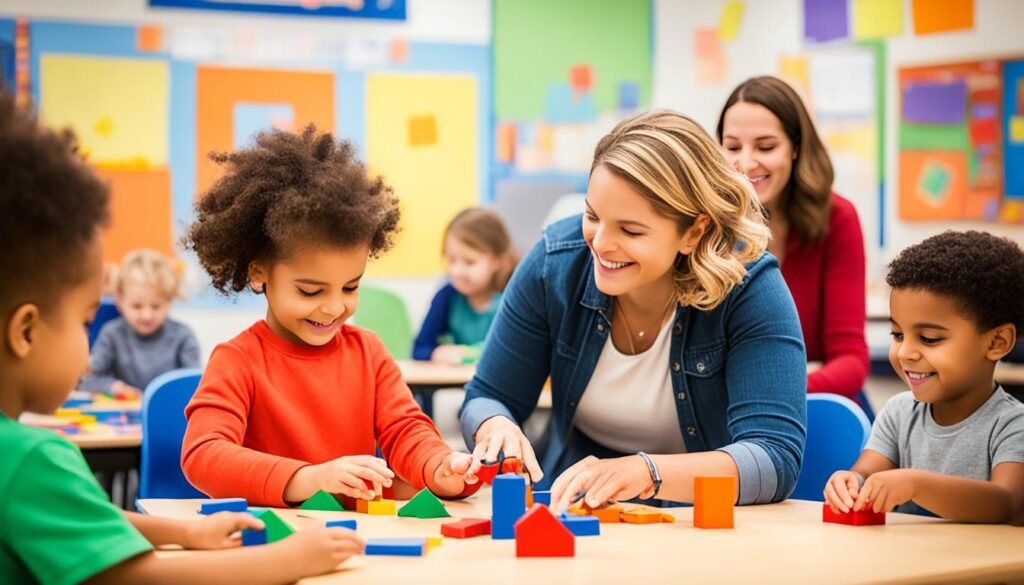
Adding these practices and tools to your teaching can make a big difference. It helps create a place where every child feels strong and able to achieve their goals.
Importance of Reflective Teaching Practices
Reflective teaching practices are key to your growth as an educator. They help improve the quality of education. By reflecting, you can check your teaching methods, see what works best for your students, and find areas to get better. This leads to better teaching strategies that help students learn more.
How Reflection Enhances Teaching Effectiveness
Reflective teaching lets you look at your own performance and how your students do. It shows you what teaching methods work well. This helps you keep getting better, making you a more effective teacher.
Methods for Engaging in Reflective Practice
There are many ways to practice reflection in teaching. You can:
- Self-assessment: Regularly check how well your teaching works.
- Peer observations: Work with colleagues to get feedback on your teaching.
- Teaching journals: Keep a journal to record your experiences and results. Think about what works and what doesn’t.
Using these methods often helps you reflect regularly. This leads to ongoing improvement in your teaching skills.

The Role of Positive Reinforcement in Early Learning
In early childhood education, positive reinforcement is key for motivating kids and making learning fun. By focusing on encouraging positive behavior, teachers make a place where kids feel important and heard. This approach not only lifts their spirits but also helps them grow.
Ways to Encourage Positive Behavior Through Reinforcement
Good classroom management in early childhood uses different ways to reinforce good behavior. Here are some top methods teachers use:
- Verbal Praise: Saying “Great job!” can really motivate kids.
- Tangible Rewards: Things like stickers or tokens show kids they’re doing well.
- Peer Recognition: When a child’s achievements are shared with others, it makes them feel proud and inspires others to do the same.
Impact of Positive Reinforcement on Child Development
Positive reinforcement does more than just change behavior right now. It really helps kids grow socially and emotionally. When kids get praised for being good, they start to act better with friends and teachers. This leads to happier feelings and sets them up for success in school. For more tips on using positive reinforcement, check out this guide at positive reinforcement.
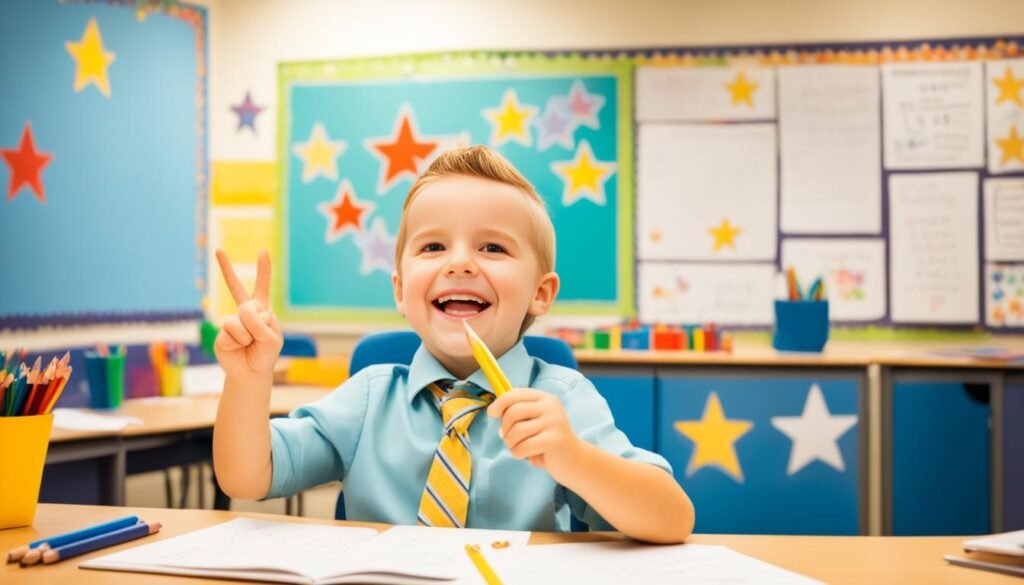
| Reinforcement Method | Benefits | Usage Examples |
|---|---|---|
| Verbal Praise | Boosts self-esteem | “Excellent work today!” |
| Tangible Rewards | Encourages continued effort | Giving stickers for good behavior |
| Peer Recognition | Builds a supportive community | Sharing a child’s success with the class |
Conclusion
Early childhood education is key to helping young children grow and develop. Methods like Montessori, Waldorf, and Reggio Emilia offer special benefits for different learning styles and needs. By using best practices, teachers can make learning fun and effective.
ECE is very important for kids’ future success in school and their emotional health. Using play, teamwork, and thinking deeply helps create a caring and exciting classroom. These methods are crucial for kids to keep learning and growing throughout their lives.
By using different early childhood education methods, you help your students feel confident in their early years. Applying these ideas and insights builds a strong base for their future. This will help them do well in all areas of life.
